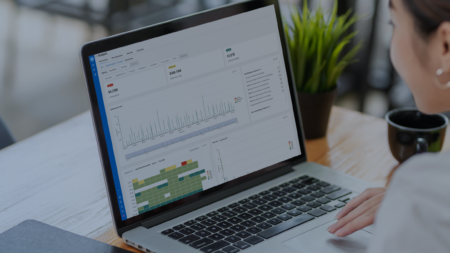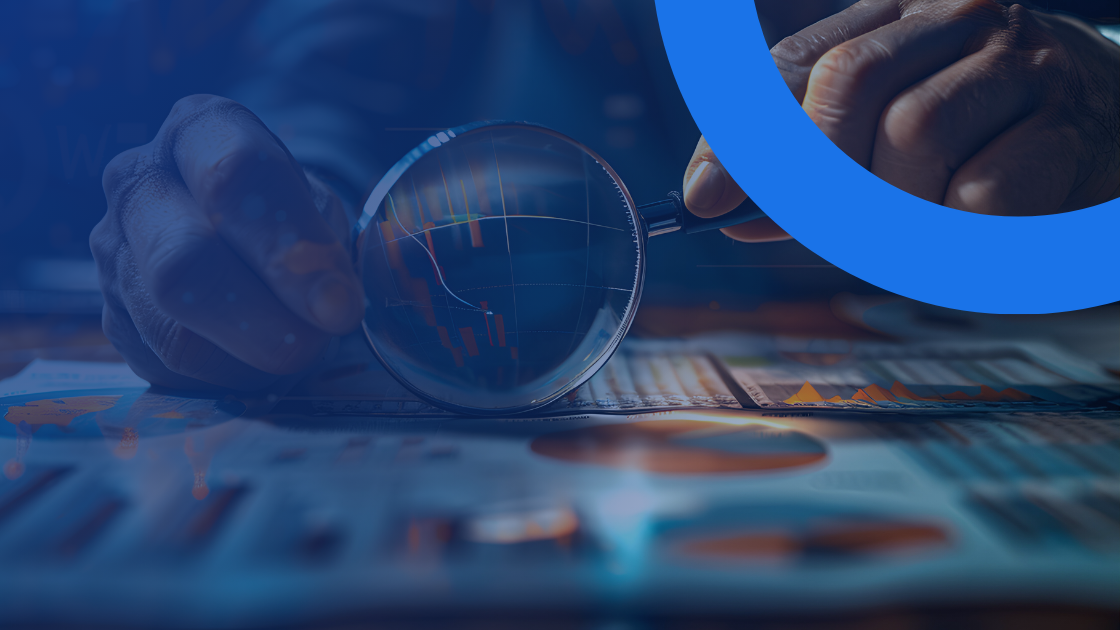Your data tells a story, and it can reveal irregularities if you know how to read it. Anomaly detection can do just that, helping you find outliers that can point to issues like fraud. Whether it’s a suspicious transaction, a cybersecurity threat, or an operational hiccup, anomalies hold the key to insights that can save time, money, and reputation.
This article will explore anomaly detection techniques from traditional statistical methods to new, AI-powered solutions. You’ll get an overview of the most popular algorithms, real-world examples, and expert recommendations to help you decide which approach fits your organization’s needs.
What is Anomaly Detection in Finance?
Anomaly detection refers to identifying data points, patterns, or observations that significantly deviate from the expected behavior within a dataset. In finance, detecting anomalies plays a crucial role in improving data quality, preventing fraud, ensuring compliance, and identifying potential risks in real time.
There are three primary types of anomalies:
- Point anomalies: Single data points that differ significantly from the rest, such as a sudden unauthorized transaction in an account.
- Contextual anomalies: Data points that are anomalous within a specific context but may seem normal otherwise, such as an unusually high expenditure during a typically low-spending period.
- Collective anomalies: A group of data points that collectively differ from the overall dataset’s expected pattern, such as a series of failed transactions occurring in quick succession.
Anomaly Detection Techniques Overview
Below is a comparison of various anomaly detection techniques based on key attributes, including complexity, data assumptions, and real-time adaptability.
| Technique | Methods | Best for | Challenges |
| Statistical methods | Z-score, IQR, Grubbs’ test | Simple, small data sets | Sensitive to data assumptions |
| Machine learning methods | Isolation Forest, LOF, SVM | Diverse anomalies | Requires labeled data |
| Deep learning methods | Autoencoders, LSTM networks | Complex patterns, big data | Computationally intensive |
Statistical Methods
Statistical techniques are among the simplest anomaly detection methods and rely on mathematical thresholds to identify outliers. Common examples include:
- Z-Score: Measures how many standard deviations a data point is from the mean.
- Interquartile range (IQR): Identifies outliers by calculating the spread of the middle 50% of the data.
- Grubbs’ test: Detects single outliers in normally distributed data.
They’re easy to interpret and implement, but their reliance on assumptions about the data’s distribution can limit effectiveness for complex anomalous data. Plus, they’re prone to false positives in skewed datasets and don’t always detect contextual and collective anomalies.
Machine Learning Methods
With machine learning (ML) techniques, your system learns patterns from data sets and can help you make predictions and data-informed decisions. In anomaly detection, ML methods are great at identifying complex, non-linear relationships in data points, making them especially effective for detecting both known and unknown anomalies across various contexts.
We can broadly classify machine learning anomaly detection algorithms into 2 categories: supervised and unsupervised learning, respectively.
Supervised learning relies on labeled datasets containing examples of both normal and anomalous data points to train models. Common algorithms used for supervised anomaly detection include decision trees, logistic regression, and neural networks.
Unsupervised learning identifies anomalies without requiring labeled data by finding patterns and detecting data points that deviate significantly from these patterns. Unsupervised learning is ideal for real-world scenarios where anomalies are rare or unknown in advance, such as detecting unusual behaviors in network traffic or sensor data.
Deep Learning Methods
Deep learning techniques use neural networks for anomaly detection in large and complex datasets. Common algorithms include:
- Autoencoders: Compress input data and reconstruct it. Anomalous data points have higher reconstruction errors.
- Long short-term memory (LSTM) networks: Specialized for detecting anomalies in time-series data by remembering long-term dependencies.
Deep learning methods excel in scenarios involving sequential or unstructured data, or datasets with intricate patterns.
Popular Anomaly Detection Algorithms
Various detection methods come with various algorithms. Here are the most common ones.
Isolation Forest
This algorithm isolates anomalies by randomly partitioning the data points. It’s fast and effective for high-dimensional data sets, though less effective for detecting contextual anomalies.
You’ll commonly find isolation forest in fraud detection in financial systems, where single transactions may deviate in amount or frequency, making them easily identifiable by partitioning.
Local Outlier Factor (LOF)
Local Outlier Factor (LOF) calculates the density of data around a point and compares it to its neighboring data points to determine how isolated the point is relative to its surroundings. If a point’s density is significantly lower than its neighbors, it is marked as an anomaly.
This approach is perfect for detecting outliers in non-linear and complex data sets. The downside is LOF can become computationally expensive as the dataset size grows, especially in multi-dimensional data.
A common use case is in cybersecurity, where it helps detect unusual access patterns in network logs, such as login attempts from rarely used IP addresses or irregular connection times.
One-Class SVM
One-Class Support Vector Machine (SVM) is a type of SVM designed specifically for anomaly detection, where it learns the boundary around normal data points and identifies any point outside this boundary as an anomaly.
This algorithm is perfect for small, high-quality data sets where you can draw precise boundaries. On the downside, it requires significant computational resources for large datasets, and its performance can degrade in high-dimensional data.
One-class SVM is commonly used in manufacturing, where it helps detect abnormal readings in machine sensor data that could indicate malfunction or wear.
Autoencoders
Autoencoders are neural networks trained to compress input data into a smaller representation and then reconstruct the original data from this compressed version. When an autoencoder can’t accurately reconstruct a point because it’s too different from the training data, it flags it as an anomaly.
Autoencoders are particularly powerful for unstructured or high-dimensional data, such as images or logs. However, they typically require large training sets to perform well and may need hyperparameter tuning to avoid overfitting.
They’re typically used in image anomaly detection, such as identifying defective products on assembly lines by comparing product images to a library of “normal” images.
Long Short-Term Memory (LSTM) Networks
Recurrent neural networks (RNNs), such as LSTMs, are built to process sequential data and recognize temporal relationships. They excel at detecting anomalies in time series data where trends or seasonality affect what is considered normal.
LSTMs are ideal for real-time anomaly detection because they can process sequences of input and highlight unusual trends or sudden spikes as they occur. However, they can be computationally intensive and require careful tuning to avoid issues like vanishing or exploding gradients.
Their most popular use cases are in financial forecasting to detect unusual spikes or dips in stock prices and in IoT systems to monitor sensor readings over time to predict potential failures in connected devices.
Implementing Anomaly Detection
One of the most important things to do when implementing anomaly detection is preprocessing data. Anomaly detection algorithms need quality data, so take care of missing values and inconsistencies, and remove noise.
Feature engineering further improves the dataset by creating new, informative features that capture underlying trends and patterns. For instance, in financial data, adding a feature for the time of day or transaction type can help an anomaly detection model identify unusual activity during off-hours.
Speaking of models, choosing the right one is the next critical step, and it depends on the type of data you’re working with, the nature of the anomalies, and specific project goals.
For example, if your dataset contains sequential data, such as stock prices or sensor logs, deep learning models like LSTMs may be ideal. If, however, you have limited labeled data, unsupervised approaches like Isolation Forests or LOF may be more appropriate.
Once you select the model, hyperparameter tuning optimizes its performance by adjusting parameters such as learning rates, number of trees (for forests), or kernel functions (for SVMs). Techniques like grid search and random search systematically test different combinations of hyperparameters to identify the best-performing configuration.
Some other best practices to keep in mind include:
- Monitor performance metrics to help minimize false positives.
- Validate with diverse datasets to make sure the model isn’t overfitting to a narrow range of data and remains robust.
- Combine techniques for hybrid approaches to improve detection accuracy.
For deeper insights into how financial professionals use anomaly detection to uncover irregularities, check out our webinar recap on the wild use cases of financial anomaly detection.
Applications of Anomaly Detection
Anomaly detection is helpful in almost any sector, but there are a few where its use is of utmost importance.
- Finance: Fraud detection, financial planning, and auditing.
- Cybersecurity: Detecting breaches and unusual network activity.
- IoT: Monitoring equipment health in real-time.
Anomaly detection is often an essential part of risk management, internal and external audits, and financial planning and analysis.
Internal Audit and Risk Management
Anomaly detection in internal audits identifies risks early, improving efficiency. Four ways anomaly detection can supercharge your audits include:
- Early detection of fraudulent activities.
- Improved regulatory compliance.
- Enhanced operational efficiency.
- Reduced manual review efforts.
MindBridge’s AI-powered anomaly detection automates key audit tasks and offers deeper insights. For instance, it can analyze vast amounts of financial data quickly, identifying irregularities such as duplicate payments or misclassified transactions that might be missed by manual reviews.
External Audit and Assurance
External audits are just as important as internal ones, and anomaly detection helps you find discrepancies and outliers faster. Accuracy and thoroughness in financial reporting are crucial, especially under new regulations like ASC 842, which require all leases to be recorded on the balance sheet.
For example, an IT service contract might include leased equipment, like routers, that were previously overlooked. Using anomaly detection, you can analyze vendor payments for consistent, recurring patterns to flag contracts that may contain embedded leases, ensuring no unrecorded liabilities are missed.
Anomaly detection tools like MindBridge are particularly useful here, as they help auditors identify payment streams that may indicate unrecorded lease liabilities.
Financial Planning and Analysis
Anomaly detection is also beneficial in financial planning and analysis, as it can improve forecast accuracy, mitigate risks, and improve budget variance analysis. For instance, if a department’s expenses suddenly increase because of a system error, the anomaly detection system can alert analysts, helping them correct the issue before it affects financial reports.
Another use case is revenue assessments, where consistent, recurring earnings are seen as high-quality because they show stability. Anomaly detection can identify the least unusual transactions in the general ledger so you can quickly spot the most reliable revenue streams.
This approach is especially helpful during financial due diligence, as it makes it easier to assess a company’s earnings strength and reliability.
MindBridge AI is an incredible tool here, as it can optimize your workflows by automating data analysis, prioritizing high-risk transactions for review, and helping you see high-quality transactions faster. Its comprehensive data analysis can help detect irregularities in projection so that the company can improve its decision-making process.
Implementing MindBridge for Anomaly Detection
MindBridge simplifies anomaly detection integration with an intuitive onboarding process. Its AI-driven system adapts to unique organizational data patterns, leveraging advanced algorithms to ensure high accuracy.
MindBridge integrates with existing systems easily. The onboarding process is user-friendly, allowing organizations to map their data sources easily and define key metrics without extensive technical expertise.
Once integrated, MindBridge’s AI-driven anomaly detection system learns from the organization’s historical data to understand typical transaction patterns, seasonal trends, and operational norms. Plus, MindBridge provides customizable dashboards and reports, allowing users to tailor insights according to their organization’s specific risk profile and audit requirements.
To better understand how MindBridge can transform audits and financial analysis, check out our blog post, Unleashing power of AI: MindBridge’s innovative approach.
Challenges and Future Trends in Anomaly Detection
Anomaly detection, especially with machine learning and AI tools, makes a significant difference for companies. For instance, a study published in Financial Innovation found that implementing machine learning-based fraud detection models can reduce expected financial losses by up to 52% compared to traditional rule-based methods.
We can expect AI’s role to increase exponentially in the future, but that doesn’t mean there aren’t still challenges and limitations to address. For instance, deep learning methods, which are critical in automated anomaly detection, come with high computational costs.
They need powerful hardware and may require long training times, so they may not be suitable for all organizations, such as small businesses or those with limited access to computational infrastructure.
Anomaly detection algorithms and supervised methods depend on high-quality labeled data. However, creating high-quality labeled datasets often involves experts manually classifying datasets, which can be time-consuming and expensive.
The strongest future trends are AI-powered real-time detection systems. These systems use streaming data to identify anomalies as they occur, allowing you to respond immediately to potential threats.
If AI is a topic that still scares you and you feel reluctant to use it for anomaly detection in accounting and finance, download our guide that will help you understand AI fundamentals and how this technology can assist you.
FAQ
1. What is the difference between supervised and unsupervised anomaly detection?
Supervised anomaly detection requires labeled data, meaning the system learns from past examples of normal and anomalous data. It’s ideal for fraud detection and financial forecasting but depends on high-quality historical data.
Unsupervised anomaly detection identifies anomalies without predefined labels, making it useful for detecting unknown risks. MindBridge applies unsupervised AI to financial data, continuously learning from patterns to detect irregularities in transactions, journal entries, and more.
2. How do I choose the right anomaly detection technique for my specific use case?
Consider:
- Data type (structured, unstructured, time-series)
- Anomaly type (point, contextual, or collective)
- Real-time needs (batch processing vs. continuous monitoring)
For example, MindBridge uses machine learning and statistical models together to detect financial anomalies in audits, risk assessments, and compliance monitoring.
3. Can anomaly detection be used for real-time data analysis?
Yes. AI-powered models like LSTM networks and autoencoders can process live data streams for instant anomaly detection. MindBridge provides near real-time anomaly detection in financial workflows, helping organizations respond proactively to risks.
4. What are the main challenges in implementing an anomaly detection system?
- Data quality (missing, inconsistent, or biased data)
- False positives/negatives (balancing precision and recall)
- Computational cost (deep learning models require high processing power)
- Explainability (ensuring stakeholders trust AI insights)
MindBridge addresses these challenges by using explainable AI and risk scoring, helping auditors and finance teams understand why anomalies were flagged.
5. How does anomaly detection differ from outlier detection?
Outlier detection finds individual extreme values, while anomaly detection identifies broader patterns that indicate risk.
For example, a single large transaction might be an outlier, but a pattern of unusual transactions across accounts may indicate fraud. MindBridge detects both, helping finance professionals identify hidden risks.
6. What are some common preprocessing steps for anomaly detection?
- Data normalization (scaling values for consistency)
- Handling missing values (imputation techniques)
- Feature engineering (creating new variables to highlight patterns)
MindBridge automates much of this process, ingesting financial data and applying AI-powered risk analysis to detect anomalies efficiently.
7. How can I evaluate the performance of an anomaly detection model?
Use:
- Precision & recall (balance between false positives and false negatives)
- F1-score (harmonizes precision and recall)
- AUC-ROC (measures model effectiveness across different thresholds)
MindBridge provides an AI risk score that prioritizes high-risk transactions, making it easier to review flagged anomalies.
8. What are the limitations of traditional statistical methods for anomaly detection?
- Assumption-based (requires normal data distributions)
- Limited adaptability (struggles with evolving patterns)
- High false positives (static thresholds often misclassify anomalies)
MindBridge enhances traditional methods with AI and machine learning, reducing false positives and uncovering hidden risks in financial data.



